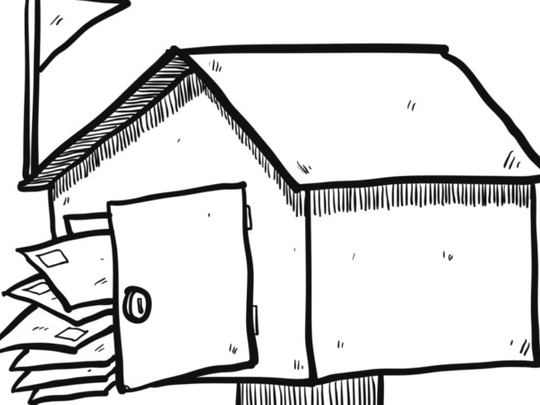
My grandmother, Mary Hourihan, retired from her job as an Agriculture Department wool research scientist in the early 1970s, when I was 9 or 10. I had always loved going to her lab in Beltsville, Maryland, where I spent happy hours spinning yarn on an electric spinning machine or pouring “potions” from test tube to flask and back again.
Grandmom knew her way through the tunnels under the sprawling campus, and lunch was always at a restaurant called the Log Cabin. She looked so official and powerful in her white lab coat and horn-rimmed glasses, yet she indulged my curiosity. She lived with my family, and I never doubted that I lived in her heart.
Her retirement was in name only, for she soon took a two-year position at the University of New South Wales and moved to Sydney. I am almost as old now as she was then, and I cannot imagine bidding farewell to my whole world to embark on a new life in such a remote place. But she was a scientist and an adventurer, and, overnight, it seemed, she was gone.
And so began my deep love of the US mail. Soon, our mailbox began to fill with thin, light-blue aerogrammes. My grandmother’s familiar script — the straight and even lines of the Palmer Method — would ribbon along those one-page tri-fold sheets. She was a frugal person, and her words were jammed into every bit of space, sometimes flowing across the adhesive strips, which tore when we pulled them open.
I kept a vigil for the mail. I would sit in the bay window of our living room, reading a book and keeping an ear out for the engine of the mail carrier’s jeep. Or I would hurry home from school, eager to see if any blue missives waited for me at command central, our dining room table.
I liked to write — and my reward was always a response from her, filled with stories of kangaroos and brush fires, her Indian roommate and various jaunts across the Outback. The mail was slow, so there was no instant gratification, but I knew that, sooner or later, she would write back. She was always my favourite pen pal.
My letter-writing lasted for years: After high school, friends scattered around the world, and we traded ideas and anecdotes about our lives in new places. I went to a small Quaker college in North Carolina, and my lunch-hour ritual began with a trip to the mailroom in the basement of Founders Hall.
The mail lady, Mrs C, moved quickly through the narrow room filling our postboxes. If I squinted through the slits, I could see the shadowy shapes of letters. On the best days, I would have a note to pick up a care package from my grandmother or my mother. And I loved to hear from my friends. One buddy would send cassette tapes of cool new music. A friend who had gone off to Virginia Military Institute told stories about his regimented world, such a contrast to mine.
Eventually I began to submit poems and stories to literary magazines, each carefully Xeroxed and shipped off with a self-addressed, stamped envelope. I would anxiously await replies, and I could tell what they contained by the envelope: Thick meant my work was being returned, thin meant it had been accepted. I had a pen-and-paper system for tracking what was where, and each evening I would scour the mail for good news.
Now that sense of anticipation has transferred to email, where I can spend hours each day corresponding with friends and colleagues, catching up with my children, following links to news reports or social media alerts.
Years ago, I was enamoured of AOL’s iconic “You’ve Got Mail!” announcement. Today, I keep my various accounts open all the time on every device I own.
It has become a bad habit and a bit of a compulsion. On nights when I can’t sleep, the lure of those devices is irresistible. I am drawn by the hope that some late-night message will convey good things — a new connection, a happy moment, some serendipity. Most of the time, of course, it is just junk, but every so often a gem emerges.
I have no method for saving or sorting what comes my way; I just star the good ones and, every so often, search the mailbox for something I can savour anew.
But I worry about the loss of the physical manifestation of this correspondence. I know I could print my favourites, but printed typescript simply does not convey the sense of a person the way my decades-old letters did: coffee stains, for instance, or the small curve of my grandmother’s script. And emails are just too easy to pop off and can be so abrupt.
I remember the rambling letters I once exchanged with friends; sometimes it took several drafts to get something just right. The ritual of collecting the mail meant something, too, as did my sense that, in holding a letter, I was holding the letter writer.
I came across a box full of those letters in the attic recently. It was a multisensory experience. Back came memories of my grandmother, dead nearly 20 years, and all the explorations and worries my friends and I shared.
Reading some responses — one side of our conversation — was like finding a photographic negative of whatever was on my mind at the time. There are notes from my younger brother, 12 years old and forced to write by our parents. Cards from my other family members. A whole time of life, bundled in a small white box in the attic.
Now such things are all stored in a gizmo my grandmother could not even have imagined. But that bright attic light — or a backlit gizmo — comes on and I’m gone.
Washington Post











